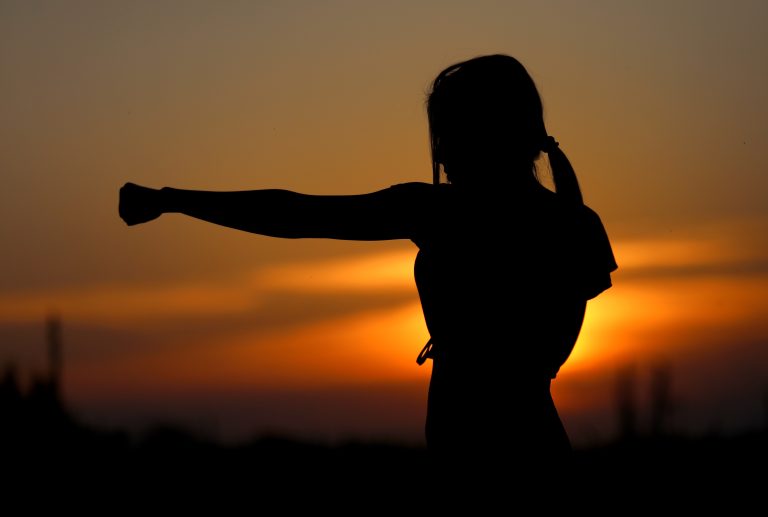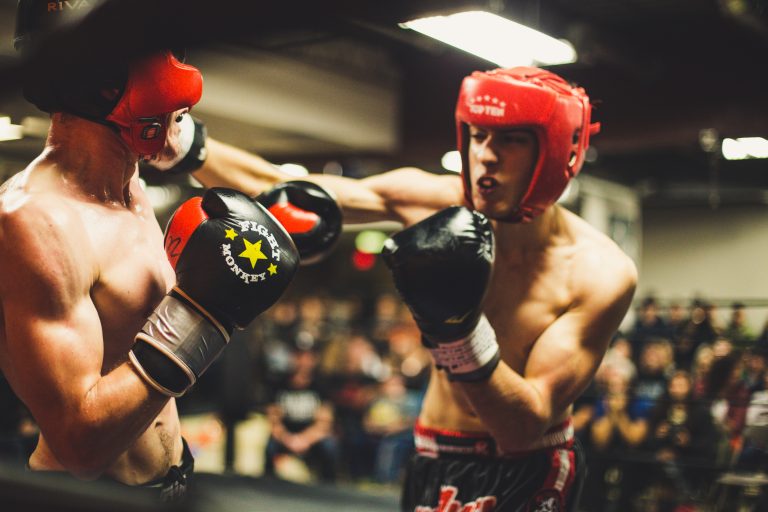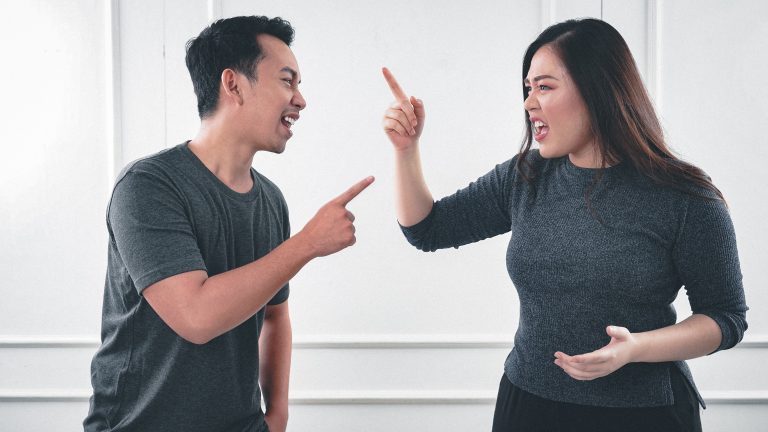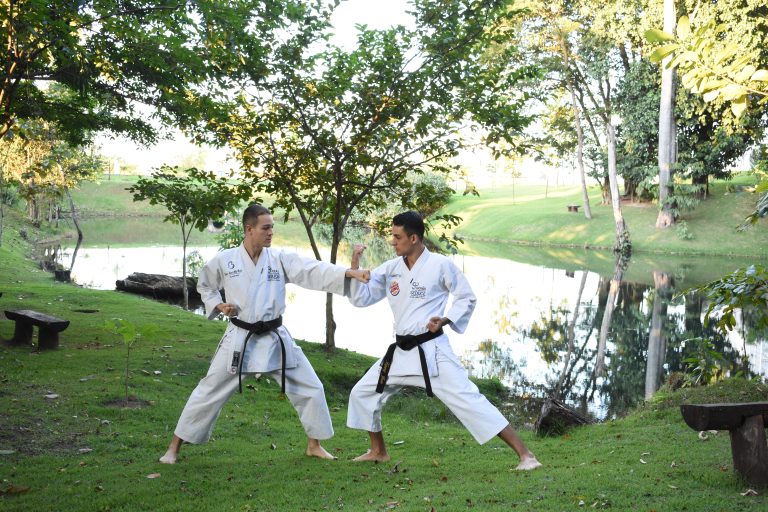The Different Stances in Karate: an Overview
Karate is a martial art that is known for its impressive techniques and stances. The various stances used in karate embody a range of important concepts, and each has something unique to offer beginner, intermediate, and higher belt levels. Understanding the different stances in karate can not only help practitioners become more proficient in their practice but also gain knowledge of the vital messages each stance conveys. In this blog post, we’ll look at eight common stances used in karate and the philosophy behind them.
Kamae
The kamae stance is a stance which can be both defensive and offensive. In practice, it is usually used to prepare for one’s next movement. This stance relies on the practitioner having a low center of gravity, with their feet spread at shoulder width with their toes pointed outward. One’s arms should be held up in front or to the side of their body in such away that they are ready to block or counter an attack with a fist or palm strike. According to Kamikaze Kanku, the kamae stance is focused on the ongoing flow of energy and continuous movement, rather than setting a stronger line of defense, as other stances strive to do. This dynamic yet balanced stance, when practiced periodically and in various ways, can help karate practitioners reach a higher level of focus and control.
Zenkutsu Dachi
The zenkutsu dachi is a frontal stance often seen in kata (or forms) and self-defense techniques in karate. An important approach to this stance is that it’s a visceral representation of perseverance and willingness to protect oneself from an attack. To perform it correctly, one must stand with their feet shoulder width apart while keeping the toes pointed slightly outward. The back should remain straight while bent forward slightly at the hips, while the arms should remain relaxed up above eye level raised at shoulder-height. The zenkutsu dachi is related to the idea of protecting oneself with stability, as Karate Do explains that this rather wide stance immerses practitioners in the practice and physicality of this stance.
Kokutsu Dachi
The kokutsu dachi is a back stance that can be derived from the zenkutsu dachi and is often seen throughout varying karate practices. As Shotokan Unlimited explains, this back stance tends to be used for different defensive applications due to it being a more stable stance opposed to the zenkutsu dachi. To perform this stance, practitioners must step back with one foot and plant it at an angle with the toe just behind them, while also having the other foot slightly closer to the front. Their arms should be close to their chest’s centerline, with their hands either at hip level or slightly higher, ready to defend or grab if needed. This heightened sense of defense is found through the rear leg pushing the practitioners forward and assisting in balance rather than maintaining weight even between both feet like other stances.
Kiba Dachi
The kiba dachi, also known as a horse riding stance, is another common form of stance in karate. It usually requires more balance and agility than other stances as it requires practitioners to stand with each foot facing outward away from the body at an angle with slight pressure on their toes and the load of their body’s weight resting on one leg while they hold their arms either to their side or up front. Due to its focus on stability, often used in kata applications, it serves as a general representation of bridging the gap between offense and defense or between contentment and aggression as explained by Karate By Jessie. The emphasis on strength within this stance is displayed through both its forward-facing energy and its attempts at finding a balanced state between offense and defense.
Gyaku Zuki Ichi
The gyaku zuki ichi is a dual-purpose stance: sometimes offensive, sometimes defensive. It is performed by standing with one foot slightly further forward than the other and both feet should be pointing outward from a central point on the body. One should stand in such a way that suggests energy being focused outward from the body. The gyaku zuki ichi is often seen in self-defense applications as it helps practitioners gain control over an attack or situation by creating an asymmetrical respose to any attack or situation they may be in according to Todaiji Karate. This stance can also provide a sense of protection while also embodying initiative as well as potential action against something or someone as its roots lie in reacting to other energies with strength and centeredness of power within oneself.
Kosa Dachi
The kosa dachi (or cross stance) is a type of stance used often for blocking against fast kicks or for providing swift balance during more complex movements like spinning kicking techniques according to Sensei Kin’s Tae Kwon Do. To perform this stance correctly one must first step forward with one foot, keeping that foot straight, uprights, and parallel to your leading arm which should be placed just slightly across your body towards your leading foot. The other foot should be placed at an angle further back from your leading arm as both feet should be shoulder width apart and parallel to one another while your arms should remain raised close to your chest centerline and held up either at shoulder level or slightly higher if needed. This type of stance provides strength with balance while allowing for quick reactions and movement against any attacks or unforeseen situations one may face in practice or outside of practice as well.
Shiko Dachi
The shiko dachi (also known as the horse straddle or sumo wrestler stance) is another common stance in karate according to Rev Dance Studio. This stance can be used for different applications such as a defensive move when blocking out against kicks or punches or for providing balance for more complex movements like turning kicks or spinning kicks as it calls upon elements of stability and agility needed for these respective moves. To properly perform the shiko dachi, one must step forward with one foot while keeping that foot along the floor and parallel with the leading arm while raising it slightly across their body and straightened out, while stepping out further outwards with the other foot so that its placed almosts two shoulders width apart from the first leg along with keeping one’s arms close to the chest centerline parallel with their feet as much as possible
Sochin Dachi
The sochin dachi (or side by side form) is used often for more defensive applications such as blocking out against attacks or punches according to JKA England Karate Academy. To correctly perform this vital stance, one must first stand upright with both feet placed shoulder width apart while each foot faces forward while keeping one’s hands and arms close up above their chest centerline either up at shoulder level or slightly higher if needed. Its focus is generally on providing stability while one practices and when paired with elements of focus like breathing exercises can help practitioners tap into their inner intuition or motivate themselves when they practice more demanding techniques like spins or jumps commonly found throughout Karate Dojo workouts.
Conclusion
These are just 8 of many different stances commonly used in karate dojo around the world that practitioners learn during practice and form a core part of true karate martial arts practice! Each has its own applications towards defense as well as learning about internal balance and knowing how it feels when one practices this martial art continually. To get faster at learning each of these stances, practitioners must learn how to move from one stance to another quickly through various drills and partner work–which can add an extra layer of depth to one’s practice!
Inhaltsverzeichnis






